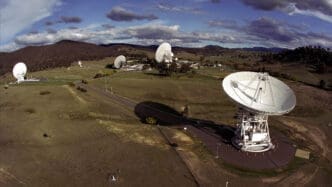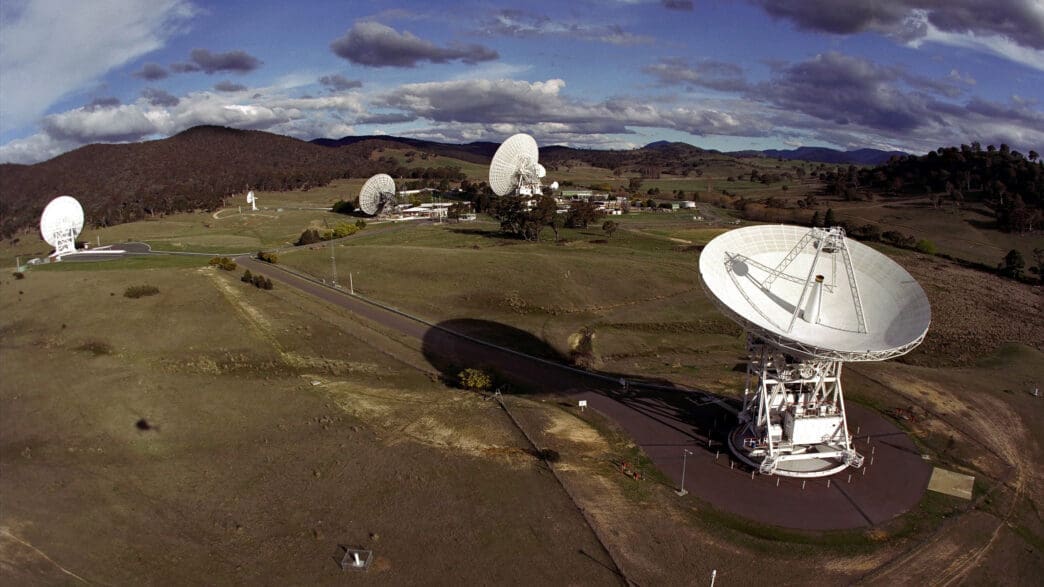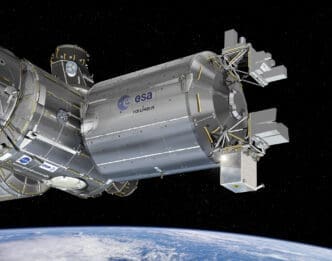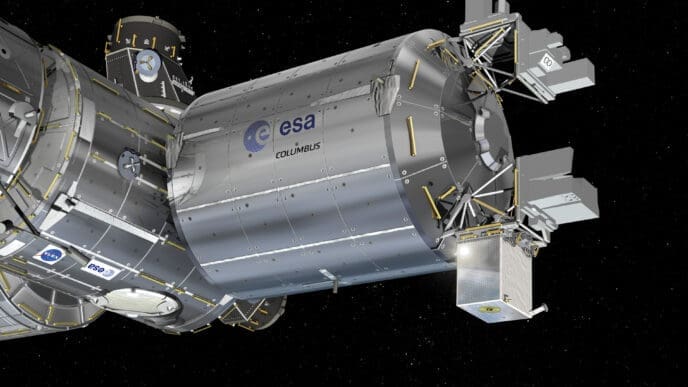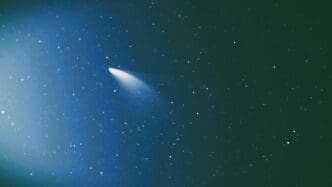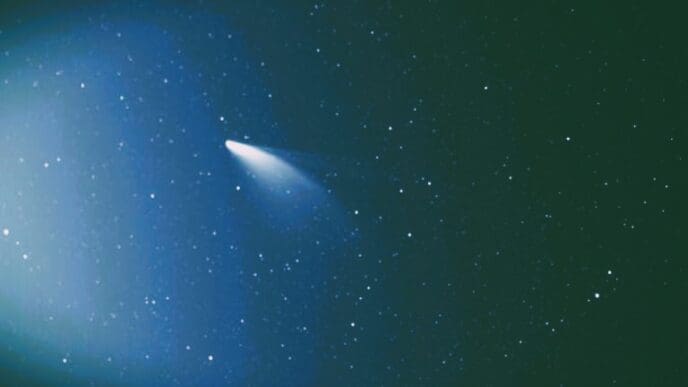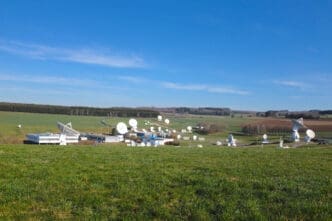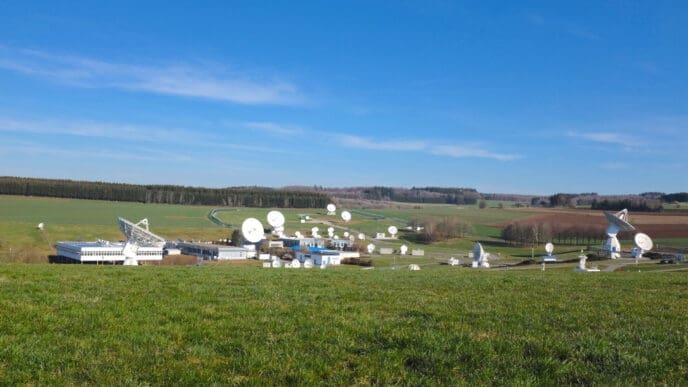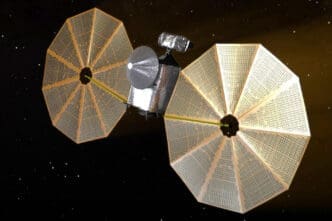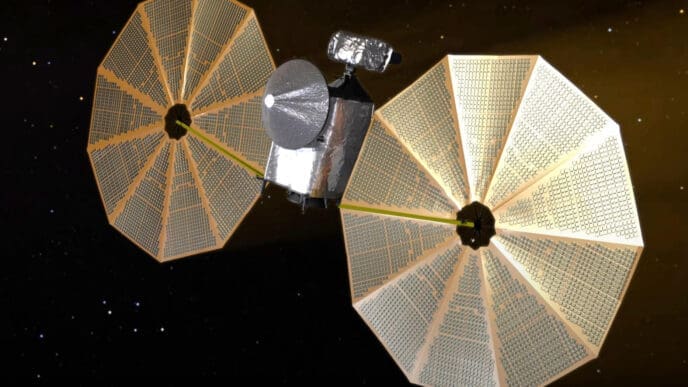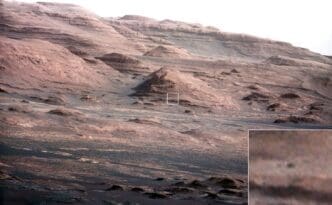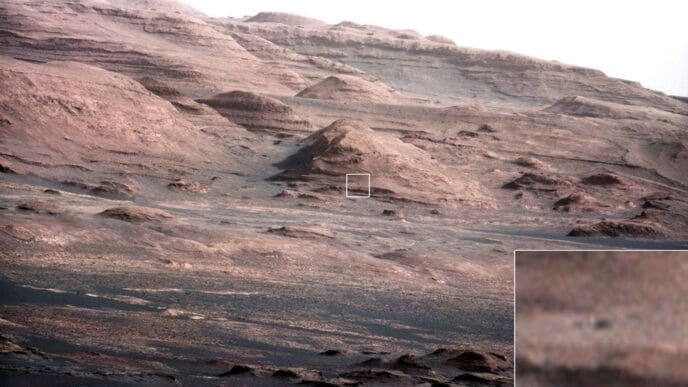In a fitting tribute to its storied history, NASA’s Deep Space Network facility in Canberra, Australia, celebrated its 60th anniversary on March 19 by breaking ground on its fifth radio antenna. Since joining the global network in 1965, Canberra has operated four antennas, playing a pivotal role in communicating with spacecraft across the solar system. The new construction marks a significant milestone as NASA strives to enhance the network’s capacity.
Canberra’s latest addition, Deep Space Station 33, is set to be a 112-foot-wide multifrequency beam-waveguide antenna. This state-of-the-art structure will be primarily subterranean, with a massive concrete pedestal housing sophisticated electronics and receivers within a climate-controlled room. This design provides a stable base for the reflector dish, which will rotate on a steel platform known as an alidade during operations.
“As we reflect on 60 years of remarkable achievements at Canberra, the groundbreaking of a new antenna signifies the dawn of another era of scientific discovery,” stated Kevin Coggins, deputy associate administrator of NASA’s Space Communications and Navigation Program. “The construction of cutting-edge antennas exemplifies the Deep Space Network’s commitment to integrating new technologies, aimed at enabling exploration for an expanding fleet of space missions.”
Scheduled to become operational in 2029, the new Canberra dish will be the final one of six parabolic dishes built under NASA’s Deep Space Network Aperture Enhancement Program. This initiative supports both existing and upcoming spacecraft, accommodating the increased volume of data they generate. Notably, the Madrid facility inaugurated a new dish in 2022, and the Goldstone, California, facility is completing a similar project.
The Deep Space Network was officially established on December 24, 1963, when NASA’s initial ground stations, including Goldstone, connected to a new network control center at the Jet Propulsion Laboratory in Southern California. This center, known as the Space Flight Operations Facility, remains the hub through which data from the global complexes is processed. Madrid joined the network in 1964, followed by Canberra in 1965, which has since supported hundreds of missions, including the historic Apollo Moon landings.
“Canberra has been instrumental in tracking, communicating, and gathering data from some of the most significant missions in space history,” remarked Kevin Ferguson, director of the Canberra Deep Space Communication Complex. “As the network continues to evolve, Canberra will maintain its vital role in supporting humanity’s cosmic exploration.”
The strategic positioning of the complexes equidistantly around the globe allows for uninterrupted spacecraft coverage, regardless of their solar system location as Earth rotates. However, Canberra’s Southern Hemisphere location gives it the unique ability to send commands to, and receive data from, Voyager 2, which is traveling southward nearly 13 billion miles through interstellar space. Voyager 1, over 15 billion miles away, transmits its data to the Madrid and Goldstone complexes but relies on Canberra for receiving commands.
Looking ahead, NASA is not only adding antennas like Canberra’s Deep Space Station 33 but is also exploring laser, or optical, communications to significantly increase data transmission capacities. While the Deep Space Network currently uses radio frequencies, lasers operate at higher frequencies, enabling the transmission of more data. The laser-based Deep Space Optical Communications experiment, part of NASA’s Psyche mission launched in October 2023, has already demonstrated high data rates over vast distances and has successfully downlinked ultra-high-definition streaming video from deep space.
“These innovative technologies have the potential to enhance the scientific and exploratory outcomes of missions across the solar system,” commented Amy Smith, deputy project manager for the Deep Space Network at JPL. “Combining laser and radio communications could lead to hybrid antennas that communicate using both frequencies simultaneously, potentially revolutionizing NASA’s communication capabilities.”
For more detailed information about the Deep Space Network, visit: NASA’s Deep Space Network.
Contact Information:
Ian J. O’Neill
Jet Propulsion Laboratory, Pasadena, Calif.
818-354-2649
ian.j.oneill@jpl.nasa.gov

